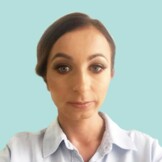How to beat and treat seborrhea? Medicines, topical ointments
Children and adults must be treated differently.
Treatment of seborrheic dermatitis in children
In childhood, we must approach treatment very carefully. If the disease appears (in the hairy part of the head) in children in the first months of life, it does not require treatment in most cases.
In this case, over-the-counter cosmetics are recommended.
There are cosmetic products available on the market that are used to remove larger deposits on the head. If the child has sparse hair, body lotions containing urea can be used to soften the oily scales.
For children, apply products with urea only to the hairy part of the head. On other parts of the body, skin irritation may occur. Another option for removing scales is to apply olive or mineral oil.
If the symptoms of the disease are localized in the intertriginous and diaper area, we apply breathable, soft pastes with antifungal, antibacterial or anti-inflammatory effects. Such treatment is long-term.
The pastes are applied 3 times a day in a thin layer.
As part of the treatment, it is necessary to ensure the child's fluid intake and a balanced diet. Frequent changes of underwear, wearing light clothing and not giving the child nappies in warm weather are also very important.
Topical treatment
Topical treatment is the mainstay of therapy for seborrhoeic dermatitis. In practice we use, for example:
Shampoos
Shampoos containing keratolytics, antifungals, antimicrobials or combinations of these are used in adult patients. They are used to treat mild to moderate forms of seborrhoeic dermatitis.
The shampoo should be chosen according to the manifestations of the disease. Indeed, one shampoo is used for dry scales and another for oily scales. Shampoos containing active ingredients are available on the market:
- Pyrition Zinc
- selenium disulfide
- salicylic acid
- antifungals - ketoconazole
- dehty
Gels
Gels are a very popular form of application. A gel containing the antifungal flutrimazole is available on the market. Flutrimazole is an antifungal that also has an anti-inflammatory effect. This gel is for adults and children over 10 years of age.
Corticosteroids
Topical corticosteroids are mainly used in the treatment of seborrhoeic dermatitis because of their anti-inflammatory, anti-allergic and antipruritic effect. Topical application of corticosteroids is used only for a short period of time.
They are available on the market in different application forms (solution, lotion, shampoo, cream, ointment). The application form is chosen according to the area in which the symptoms of the disease are located. In general, lotions and creams should be applied to the face and body.
Shampoos, foams, ointments and solutions should be applied to the hairy part of the head.
Medicines include, for example:
- alclomethasone dipropionate
- hydrocortisone butyrate
- methylprednisolone ceponate
- prednisolone + salicylic acid
- prednisolone acetate + hexamidinium diisethionate + clotrimazole
- triamcinolone acetonide
Antifungals
Topical antifungal agents are available in various application forms (shampoos, creams, lotions). They are mainly used for their advantageous properties - good tolerability, low irritant and sensitizing potential.
In the treatment of seborrhoeic dermatitis, they suppress the presence of malassezia and exert their anti-inflammatory effect.
- bifonazole
- cyclopiroxolamine
- ketoconazole
- terbinafine
General treatment
General treatment is chosen by the doctor only for severe and more extensive forms of seborrhoeic dermatitis. The most commonly used drugs include antifungals.
Antifungals
The antifungal drug ketoconazole is prescribed at a dose of 200-400 mg/day. Treatment with ketoconazole is slowly discontinued because of its potential toxicity and higher risk of recurrence.
Terbinafine is mainly used in the treatment of seborrhoeic dermatitis due to its anti-inflammatory antioxidant effect. It is prescribed at a dose of 250 mg/day.
Antibiotics
Antibiotics are used in the treatment of seborrhoeic dermatitis only in proven secondary infection and in chronically recurrent forms. The choice depends on the sensitivity of the bacteriological smear.
Isotretinoin
Isotretinoin is used for the treatment of severe forms of seborrhoeic dermatitis. Low doses of isotretinoin (0,1-0,3 mg/kg) are recommended. Treatment should last no longer than 2 months. Isotretinoin is characterised by a number of effects:
- reduces the size of the sebaceous glands
- reduces sebum production
- inhibits the dedifferentiation of sebocytes
- has an anti-inflammatory effect










